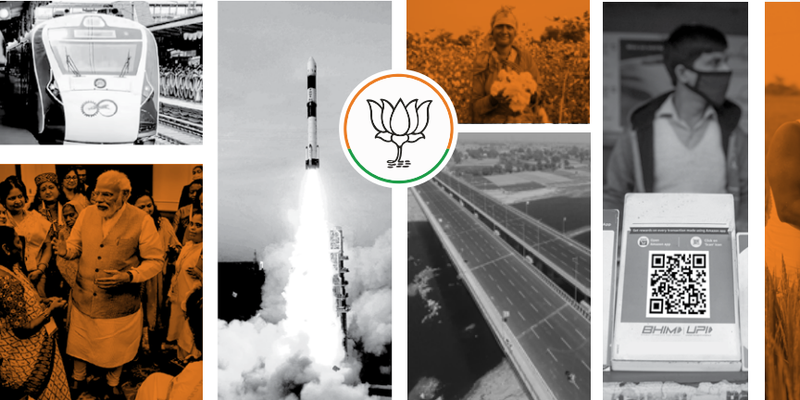Dawn of the Account Aggregators
Mining data has become seamless, and revenue-oriented as account aggregators tap into trends across diverse industries to use this tool to its maximum. Going forward, AAs will define how multiple parties can use this data to their ultimate advantage.
Since it’s launch in April 2016, Unified Payments Interface (UPI) has taken the Indian payment ecosystem by storm. With nearly a billion transactions per month, it is undoubtedly shaping the transition to digital payments. To further the objective of making financial products accessible to the next billion, IndiaStack, the public digital infrastructure behind UPI, has been enhanced to introduce Account Aggregators. The idea is to enable and encourage innovation on top of this digital infrastructure to drive financial inclusion in a fair and equitable manner. India, like most developing countries, is already data rich but not economically rich. It is unlike developed countries that became data rich after reaching economic affluence. How so? A person in Tier II city in India already has data consumption, and digital service usage similar to someone in the West.

Consequently, the digital footprint of users in the US, Western Europe and India will have similarities, even with the vastly different income levels. In order for data wealth to translate to economic wealth, India has to enable people to leverage their data to improve their lives. How do we make people leverage their own data meaningfully?
AA provides the scaffolding to enable that. AA introduces the concept of an electronic consent artefact - it refers to individual data or business data in an encrypted form – this enables individuals to request, and then provide selective consent to service providers to access data. Electronic consent artefacts enable the user to access their own data which resides with various different repositories, and share this information in a highly granular fashion with services providers. The consent is for a predefined time period, and can also be revoked by an individual.
Taping into AA’s large data base?
Who are these service providers? Anyone who provides traditional financial services like loan-providers (banks, non-banking financial companies), brokerages and wealth management companies can tap into this. AA is under the FSDC umbrella with full regulator support from four regulators —Reserve Bank of India, Securities and Exchange Board of the India (Sebi), Insurance Regulatory and Development Agency (Irda) and Provident Fund Regulatory and Development Agency (PFRDA). Similar to NBFCs, AA are also regulated by RBI.
Seven companies have been given an in-principle approval to get started. Incidentally, AA cannot see, store or resell this data. Electronic consent is programmable, can be one time or time-restricted access (eg expires in a week). This should help realise the vision of using alternate data for lending - such as mobile phone recharge. Imagine an Ola/Uber driver in a Tier II city in UP, whose digital footprint primarily consists of getting daily payments into his bank a/c and making regular mobile recharges for his phone. He can consent to share his cash-inflow and outflow over a six-month period with an alternate lending company that uses a flow-based lending approach to make a credit decision. AA can facilitate the exchange of data electronically, where the loan provider can use the data for a limited period of time for the specific purpose of making a credit decision.
Similarly, a small business can provide access to their GST filings, bank account, mortgage repayment information, in order to avail credit. Currently, this process consists of creating a thick paper dossier with print-outs from several different accounts or sharing net-logins. The presence of AA, which acts like a data-switch, provides a standardised way for a user to access data in disparate places such as telco records, banks, tax, insurance and provide it to financial service providers for specific purposes.
The user experience flow will be familiar to UPI users: 1. User registers and downloads an app from one of the RBI sanctioned AAs. User connects the relevant personal or business financial accounts with the AA. By regulation, AA cannot inspect or store user data
2. User approaches a bank for loan. The bank asks for financial statements for a certain time period, and submits this request to the user via AA (For first time users, the bank would first direct users to register with an AA).
3. App notification asks the user to approve request for data, for a specific use (loan) for a specific time (90 days). User provides approval on the app
4. AA creates a data artefact collating data from the various sources and sends it to the bank. In AA parlance, data repositories such as a bank, NBFC, asset management company, insurance company, pension fund, all titled as Financial Information Providers, and the users of this data such as a bank or a mutual fund company which are regulated by the financial services regulator are called FIU or Financial Information User. A move towards flow-based lending will inevitably lead to a virtuous cycle where SMBs also have an incentive to formalise their business transactions. The more digital the transactions, the greater the ‘flow-history’ of the business, and the better their credit eligibility, thus directly rewarding and encouraging good financial behaviour.
Increasingly, individuals and small businesses will have a small asset base but a rich ‘flow’ history of inbound and outbound payments. These are highly credit-worthy customers and businesses even though their asset base is small. With all of this information available in digital form, loan providers can effectively use AI/ML techniques to analyse the rich data flows and make ever more sophisticated credit decisions for asset poor consumers and businesses. Better underwriting with data from verified sources, a reduction in underwriting costs, faster turnaround times, easier monitoring and reduction in bad loans will provide a strong incentive for banks to approve smaller loans sizes and drive financial inclusion. Most of the discourse in the world today has been around protecting user data.
The GDPR legislation in EU provides stringent provisions for user data protection (and even transfer of such data). AA accounts for data protection but takes a different approach to data use. It provides for flexible use of data by enabling users to decide who should access data, for how long, and for what purpose. Thus enabling users to leverage their electronic data footprint to access better financial services and improve their economic status. This is data empowerment. The AA framework enables another use case: A unified view of all personal financial assets. Third party apps can now aggregate user information across multiple providers (mutual funds, banks, pension fund etal) by using the AA framework, providing it in a single view to the user. Having such information is not only convenient but also enables service providers to easily offer personal portfolio management.
AA is the first such implementation of data access/control/use by individuals and businesses in the world at scale. The AA architecture is industry agnostic. Even though it starts with fintech today, AA use cuts across domains, and will expand to include education and health. The bold ambition of India stack is to encourage innovation that will lead to making services that are available to the top 0.1 percent of the population for the rest of the country. AA is a major step forward towards that goal.
(Disclaimer: The views and opinions expressed in this article are those of the author and do not necessarily reflect the views of YourStory.)
(Edited by Suruchi Kapur- Gomes)













